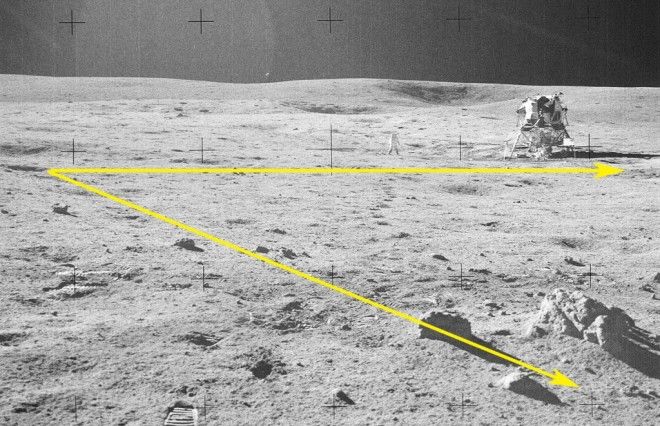1946: First US-designed rocket reaches the edge of space.
1951: First time dogs were sent to space. (USSR)
1957: First artificial satellite, Sputnik 1, reaches space. (USSR)
1958 / 1959: Explorer 1 and Explorer 3 confirm the existence of the Van Allen radiation belts. The trapped radiation is then mapped by Explorer 4, Pioneer 3, and Russia’s Luna 1—all of which describe extremely high radiation levels.
April 12, 1961: First manned flight, Vostok I , low Earth orbit (USSR).
May 25, 1961: President John F. Kennedy announced his goal of putting a man on the moon by the end of the decade. States we will need to find ways to protect astronauts from high radiation.
Feb. 20,1962: Mercury-Atlas 6 First American (John Glenn) in orbit, 3 orbits in low Earth orbit (USA)
June 3, 1965: Gemini 4 First American spacewalk by Edward White in low Earth orbit.
1966: Luna 10: Unmanned. First artificial satellite around the Moon. (USSR)
Mid 1960s: At this point in time it appears NASA executives found themselves in a dilemma, facing several problems which threatened to end the moon program. They became keenly aware that:
- · Astronauts travelling beyond low Earth orbit would be exposed to the zone of radiation within the Van Allen belts containing proton belts with kinetic energies ranging from 100 keV (which can penetrate 2.3 inches of lead) to over 400 MeV (which can penetrate 5.7 inches of lead).
- · Even short-term exposure to these and other sources of high radiation would cause sickness and death to the astronauts.
- · No practical method of protection from the radiation in the form of shielding had been found.
- · No feasible method of ‘flying around’ the belts had been found.
- · Once beyond the belts, the travelers would face additional hazards from cosmic rays and solar particle events.
- · Solar cells, integrated circuits, camera film, and sensors would be damaged by radiation. Thus, all spacecraft electronics would need to be re-designed and hardened against radiation to operate reliably when traveling outside low earth orbit.
- · There was a real risk of geomagnetic storms further damaging electronic components on spacecraft.
Additional issues also weighed heavily:
- · America’s aerospace technology had grown to become a symbol of national prestige. By the mid-1960’s the administration was experiencing tremendous political pressure to complete their mission of a crewed lunar landing—no matter what.
- · There was unyielding pressure from the larger aerospace contractors (Grumman, North American Aviation, Pratt & Whitney, etc.) who hoped to continue their huge financial gains (billions in today’s money) from the missions.
· Social pressures were mounting from numerous sources:
o After Kennedy’s assassination it was felt the nation needed healing in the form of a manned lunar landing.
o It was felt that a crewed lunar landing would, in ways, unite the world.
o Some felt the US needed to prove its dominance over Russia’s space program.
o After runaway spending of billions of dollars, it was believed the nation’s taxpayers, who had borne the brunt of the expenses, would not tolerate a failure.
NASA’s top decision-makers had three choices:
- Admit failure and cancel the program entirely with the hope that one day technological advancements would make it possible to transverse the radiation belts, and travel through cosmic rays and solar particle events beyond the belts, without the loss of human lives.
- Admit to the discovery of unforeseen problems and postpone the program until feasible solutions to the problem of radiation exposure—and other major problems—were found.
- Launch crewed rockets into low Earth orbit. Unbeknown to ground crews and a world-wide audience, the ship and its crew would remain there while NASA surreptitiously televises a staged and pre-filmed lunar landing to an unsuspecting audience. Afterward, the crew of the orbiting spacecraft (still in low Earth orbit) would dispense of all but the command module and return to the Earth’s surface as heroes.
Many believe NASA’s top decision-makers chose number three.
January 22, 1967: Gus Grissom holds an unauthorized press conference where he tells reporters the US was “at least a decade away from even contemplating a moon mission.”
January 27, 1967: Grissom and two other astronauts (both of whom were also skeptical of the moon mission) die in a sudden fire inside the command module during a routine test.
October 1968: James Edwin Webb, administrator of NASA, resigns.
December 1968: Apollo 8 “First manned flight around the Moon.” This, apparently, was faked, otherwise the astronauts would have died from the effects of radiation exposure before reaching the moon.
May 1969: Apollo 10 “Descent to within 9 miles of lunar surface.” This, it seems, was also faked.
July 1969 and November 1969: Apollo 11 and 12 “Crewed lunar landings.” Many now believe these famous missions were faked and the ship and its crew remained in low Earth orbit while certain in-the-know NASA technicians broadcast a pre-recorded “lunar landing” to an unsuspecting audience. The crew of the orbiting spacecraft (which was still in low Earth orbit) dispensed of all but the command module and returned to the Earth’s surface as heroes.
Within one year, all three astronauts from the Apollo 11 mission resigned from NASA.
Starting around 1969, attentive observers within the general public began noticing recorded sound, filmmaking, and photographic blunders along with numerous physical and logistical impossibilities from the pre-recorded moonwalk simulations.
April 1970: Apollo 13 “Failure of spacecraft oxygen tank about 56 hours into the trip caused mission cancellation and return to Earth.” Many believe this space drama was staged to rekindle interest and sentiment in the remaining moon missions.
1971 and 1972: Apollo 14, 15, 16, and 17 “Crewed lunar landings.” Many believe all these—like every supposed trip outside low Earth orbit—were faked.
Since the last Apollo mission in 1972, every manned spaceflight has been confined to in low Earth orbit.
Inexplicably, NASA reports they have disposed of all drawings, schematics, and design blueprints from the moon missions and now claim they “no longer have the technology to return to the moon.”







